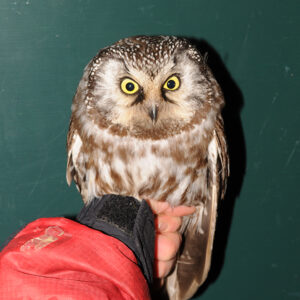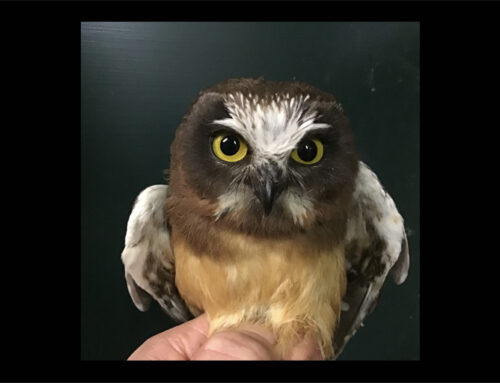April has started with a bit of a bang. In the last week, we have captured 248 owls. This brings the season’s banding totals to 332 Northern Saw-whet Owls, 80 Long-eared Owls, and seven Boreal Owls. We have also recaptured 25 previously banded saw-whets. The first Boreal Owl (BOOW) of the season arrived on April 1. The regular occurrence of BOOW here is one factor that makes the owl migration at WPBO so unique. Very few migratory banding stations in the Lower 48 catch BOOW with any regularity. Unfortunately, their numbers here have declined significantly over the last few decades. In the late ’80s and early ’90s, irruptions produced over 100 BOOW in the spring; 163 were banded in the spring of 1988. Starting in the mid ’90s, the numbers dropped to half of what was experienced in 1988. Since 1992 the highest spring total for BOOW was 78 in 2013. Since 2013 the highest total was 20 in 2018, a far cry from the numbers seen just over 30 years ago. Although Great Gray Owls and Northern Hawk Owls have always occurred in much lower numbers than BOOW, their numbers have also declined over this period. We don’t know what has caused the decrease in numbers of these three northern forest owl species, but every spring we hope to see any sign that this trend might start reversing itself.

The season’s first Boreal Owl.
In addition to the owls, some amphibians have started emerging in recent nights — mostly blue-spotted salamanders and small numbers of wood frogs, spring peepers, red efts, and a spotted salamander.

Spotted salamander.
2021 Spring Owl Banders
Chris Neri & Nova Mackentley
You can read Chris and Nova’s weekly blog post and follow WPBO’s social media (Facebook, Instagram, and Twitter) for owl banding highlights this season.
Owl Banding Presentations — We apologize, but live education demonstrations of our owl banding program will not be offered in 2021 due to COVID-related risks and restrictions.
If you visit WPBO, please practice social distancing while doing so. Although not required, we encourage you to wear masks if you are in close proximity to other people, even if outdoors. You may read the full 2021 COVID-19 Updates for Michigan Audubon and Whitefish Point Bird Observatory here.




